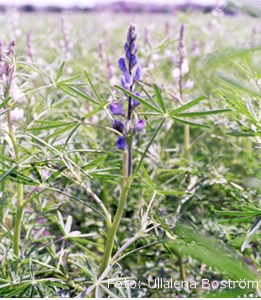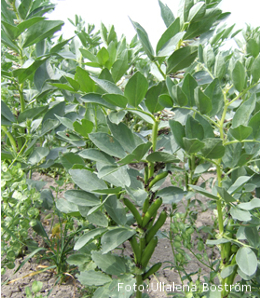Lupin and faba bean

Cultivation and weed management
Project manager: Ullalena Boström, Department of and Crop Production Ecology, SLU.
Nitrogen-fixing crops are valuable elements in the crop rotation on organic farms. In addition, there is a need within organic farming to be able to self-produce protein-rich supplement feeds for production of beef cattle, sheep, pigs, poultry and for dairy cows.
Since the infection risk for pea root rot (Aphanomyces) prevents cultivation of peas at closer intervals than 6-8 years, there is an urgent need for other complementary protein sources. Certain other species, e.g. vetch, can act as a host for pea root rot and are thus not suitable as a substitute crops. Probably, narrow-leaved lupin (Lupinus angustifolius L.) cannot act as a host or be attacked by the rot. New lupin varieties have a considerably lower alkaloid content than the former types and are considered suitable as a protein source for both beef cattle and pigs.
As for new varieties of faba bean (Vicia faba L.), time to maturity is shorter than for older varieties. In the early time of development, both faba bean and lupin are low competitive and weed management is needed in order to reduce the input of new weed seeds to the soil seed bank.
The aim of this project is to study the effects of weed harrowing and inter-row hoeing on weeds and grain yields of faba beans and two types of lupins grown at two row-distances.
